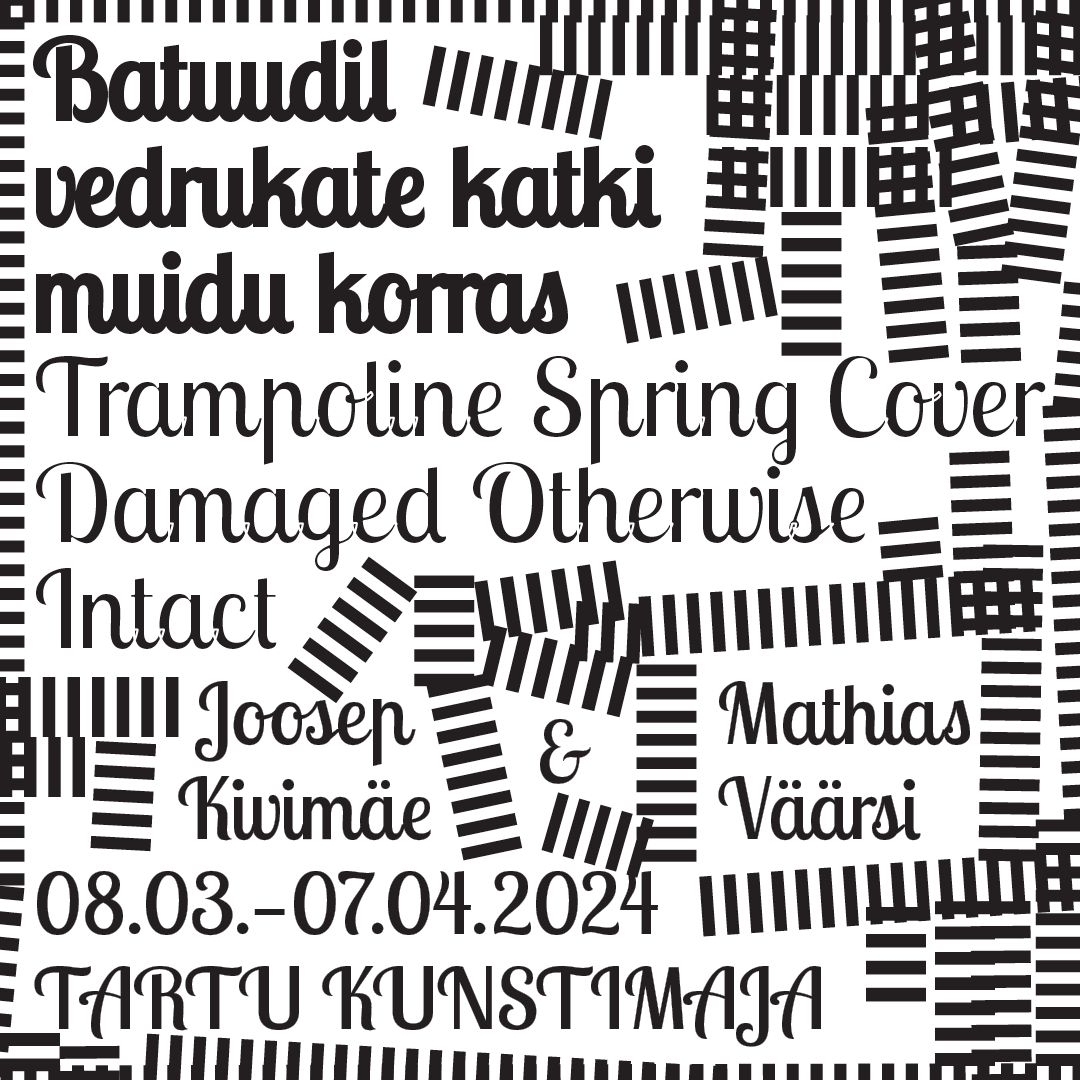This might appear alienating and introspective to the bystander: is it just a pose, has anyone even witnessed someone actually jumping on a trampoline? But the absurdity of the trampoline abundance directs one’s thoughts to more and less utopian futures: to jumping as a shared experience, to abandoned trampolines as inorganic skeletons and to the archaeological matters of our time. When does a phenomenon become culture?
Collective effort bounces high.
In Inuit cultures, the end of the whaling season is celebrated with an event called Nalukataq. The canvas, traditionally made of walrus or seal skin, is held by a group of people by its edges to allow one jumper to bounce up and down on it. The collective effort of individuals creates a temporary springboard with powerful properties. The high flight and the jumper’s aerial poses are collectively enjoyed. This is how a community celebrates.
Mathias Väärsi and Joosep Kivimäe create an image of a possible future, where shared habits and experiences, as well as the nostalgia surrounding them, are the basis for a subculture, the centre of which is also bouncing on canvas. When lawns, overgrown garden patches and the ruins of suburbia are left with only steel frames – the skinned skeletons of decaying trampoline animals – young people who remember their heyday gather in parking lots to relive their shared experience. Do you remember how our eyes first met above the garden hedge? When Kelly-Brigitta broke her leg between the springs? When dad was mowing the lawn and found our beer cans under the trampoline?
Joosep Kivimäe (b 1994) is a Tallinn-based photo artist. In his youth, he earned pocket money as a moss sweeper and lawn mower.
Mathias Väärsi (b 1988) is an Estonian artist, designer and ultra-cyclist, who was born on 23 December 1988 at 11:55 PM in the Tartu Maternity Hospital. He spent his childhood in Sagadi Manor and on Võsu Beach and attended the Vergi Kindergarten. To be continued…
Laura Linsi (b 1989) is an architect, lecturer and editor-in-chief who is based in London and in Estonia. When she started university, her mother moved back to the centre of Tallinn from Pirita Kose, because, to Laura’s surprise, her mother had moved to the edge of the town mostly for the sake of her child.
The curator of the exhibition is Laura Linsi.
The exhibition is supported by the Cultural Endowment of Estonia.




